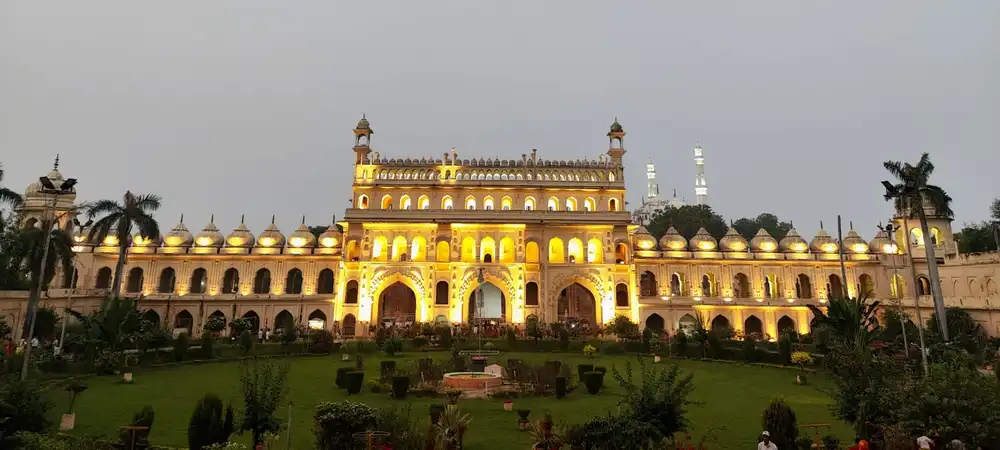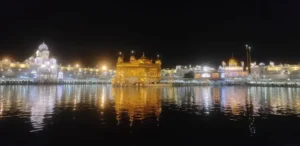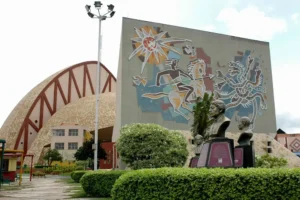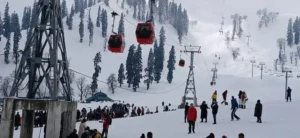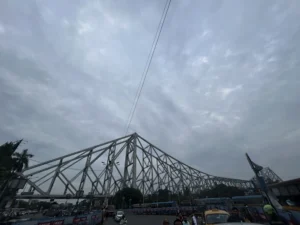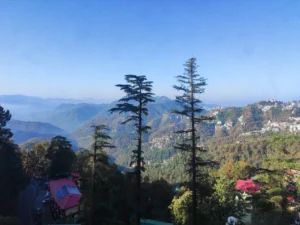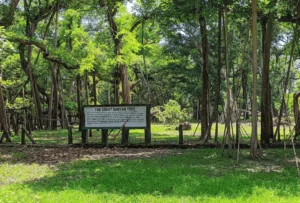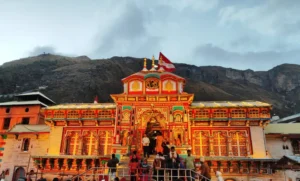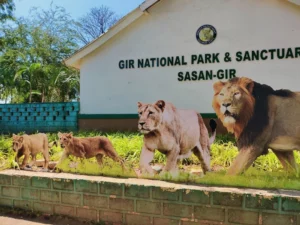Lucknow is the capital and the largest city of the Indian state of Uttar Pradesh. The city boosts of rich culture, history, seamlessly blended with modernity.
“Lucknow” is the anglicized version of the local pronunciation “Lakhnau”. Known as the City of Nawabs, the city boasts of grand architectural marvels, rich Awadhi cuisine, and a legacy of etiquette and hospitality. Whether you’re a history buff, a foodie, or a traveler seeking heritage experiences, Lucknow offers a unique charm that captivates every visitor.
Explore the Nawabi heritage:
Bara Imambara – A Glimpse into Nawabi Grandeur
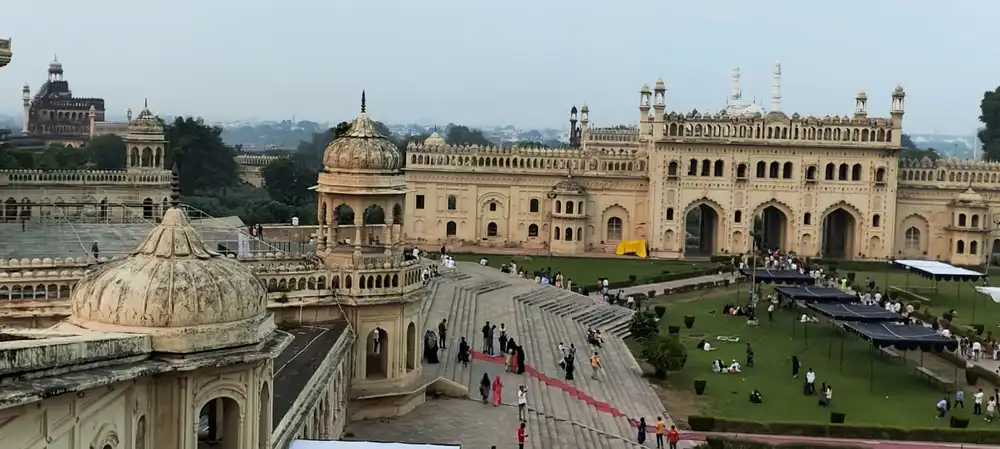
Nawab Asaf-ud-Daula commissioned this iconic architectural marvel as a famine relief project in 1784. Laborers built the structure during the day, while the aristocrats were employed at night to tear down parts of it—ensuring that no one felt embarrassed about doing menial labor.
The entry fees for Bara Imambara are:
Indian Adults: ₹50 per person
Indian Children: ₹25 per person
Foreign Nationals: ₹500 per person
Timing: Open 6:00 AM to 5:00 PM, Tuesday through Sunday. Monday remains closed.
On Friday, the complex remains closed till 3PM for Jummah Namaz (Friday prayer) . Visitors can visit from 3-5PM, however it might be more crowded than usual.
Central Hall – This hall ranks among the largest arched constructions in the world, built without beams or pillars. Originally, people gathered here for religious events, and it still holds significance for Shia Muslims during Muharram. Nawab Asaf-ud-Daula, who commissioned the monument, rests inside the hall.
Shahi Baoli – This is an ancient stepwell that once served as a water reservoir and a secret surveillance point for the Nawabs of Awadh. This architectural marvel blends Persian and Indian styles. The stepwell has five stories and features intricate archways, pillared corridors, and hidden tunnels. The architecture also includes a fascinating optical illusion where you can see a reflection of someone standing at the entrance in the water.
Asfi Mosque – The mosque features intricate Islamic calligraphy, massive domes, and ornate minarets. The mosque allows only Muslims inside for prayers, but visitors can admire its stunning exteriors.

Discover More: Explore the Fascinating Bada Imambara Here!
Bhul Bhulaiya: Unraveling the Mysteries of Lucknow’s Maze
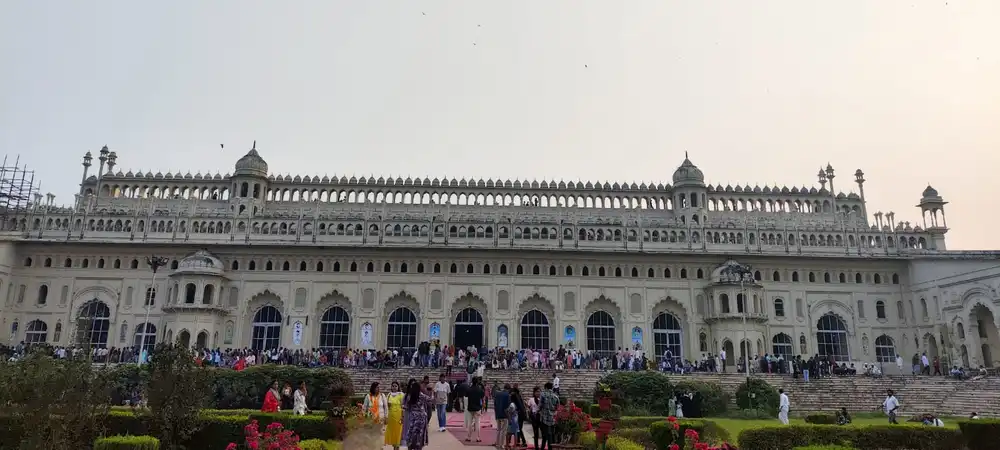
Nestled within the Bara Imambara, the Bhool Bhulaiya or Bhul Bhulaiya is one of Lucknow’s most fascinating architectural marvels. The Labyrinth sits above the central hall of the Bara Imambara. The labyrinth consists of over 1,000 interconnected passages, staircases, and dead ends, designed to confuse invaders. The Bhool Bhulaiya was not pre-designed, thereby making the structure completely unique and unpredictable. After making your way through the maze, you can climb to the top for a breathtaking 360-degree view of Lucknow
Ticket: included with Bara Imambara
Visitors must hire a local guide to explore the maze, as it is easy to get lost inside.
One can refer to the guide charges, before hiring a guide.
Visitors have to remove their shoes before entering. The locals charge as they please, however they give a receipt of Rs. 2/-. So one can pay as per that.
Palace of Lights: Chota Imambara
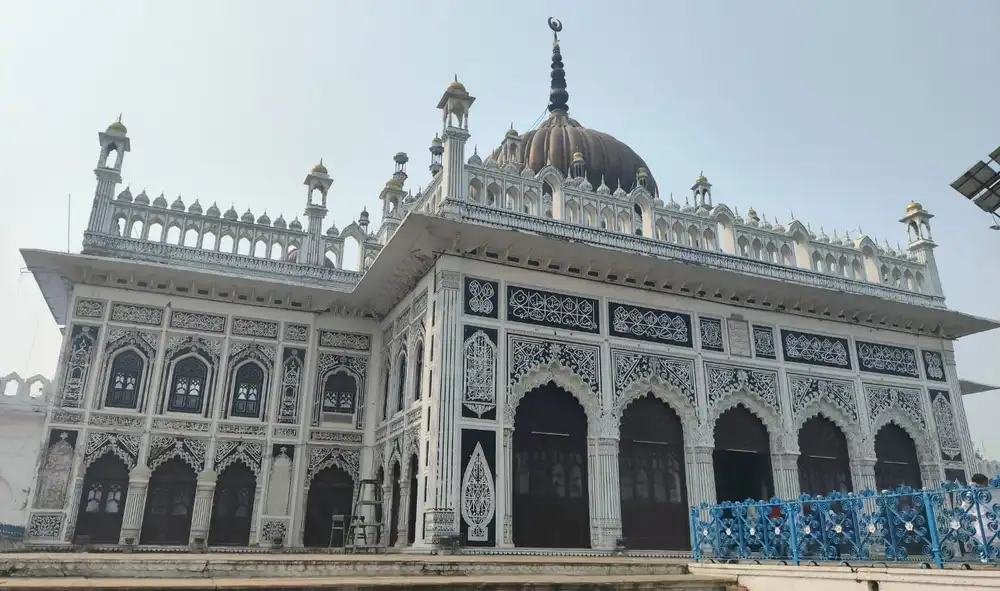
Nawab Muhammad Ali Shah built the Chota Imambara in 1838. This beautiful structure served as a congregation hall for Shia Muslims during Muharram and later became the tomb of the Nawab and his family.
Stunning Belgian chandeliers, imported from Europe, decorate the interiors, earning it the nickname “The Palace of Lights.” The walls and ceilings with verses from the Quran, written in exquisite Islamic calligraphy. A beautiful water tank and lush gardens surround the Imambara. Builders began constructing the Husainabad Mosque to make it one of Awadh’s grandest mosques. However, design flaws and structural issues prevented its use for prayers, leaving it mostly vacant.
Entry Fee: ₹50 (Indians), ₹500 (Foreigners) (Combined ticket with Bara Imambara). Separate ticket for the Chota Imambara is also available.
Visitors have to remove their shoes before entering. Women have to cover their head. Photography is not allowed inside the Imambara.
Rumi Darwaza: The Grand Gateway to Lucknow’s Regal Past
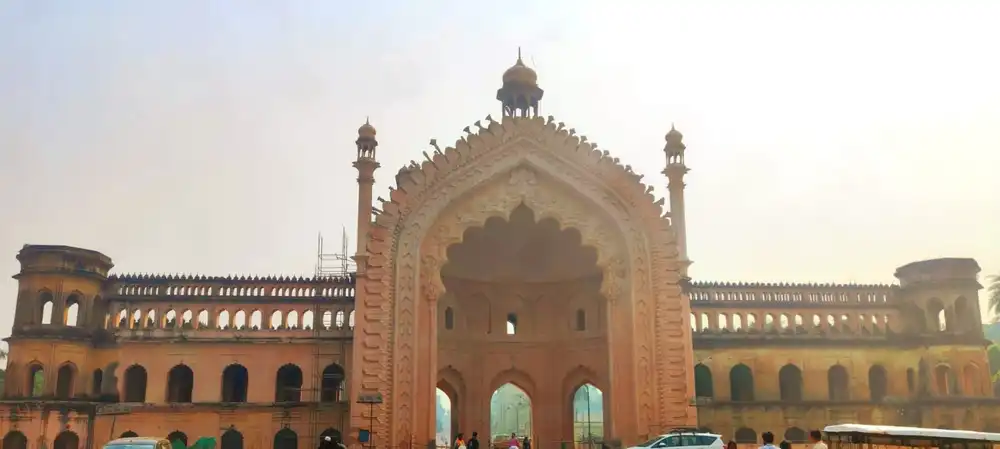
The Rumi Darwaza stands as a stunning 60-foot-high gateway, leading to the Bara Imambara. Earlier, it used to serve as a main entrance to the city of Lucknow during the Nawabi era.
Nawab Asaf-ud-Daula built this majestic structure in 1784, drawing inspiration from the ancient gates of Istanbul (then called Constantinople). This influence earned it the name “Rumi,” derived from “Rome,” referring to the Byzantine Empire.
The architecture is a blend of Indo-Islamic and Persian architecture, with floral motifs and intricate carvings. The entire structure was built without using any wood or metal, relying solely on bricks and limestone.
Visitors can explore it at any time. There is no ticket or charges.
Best time to visit: early morning (less crowd) or in evening (when it is beautifully lit)
Visitors can enjoy snacks in the nearby stall.
Husainabad Clock Tower
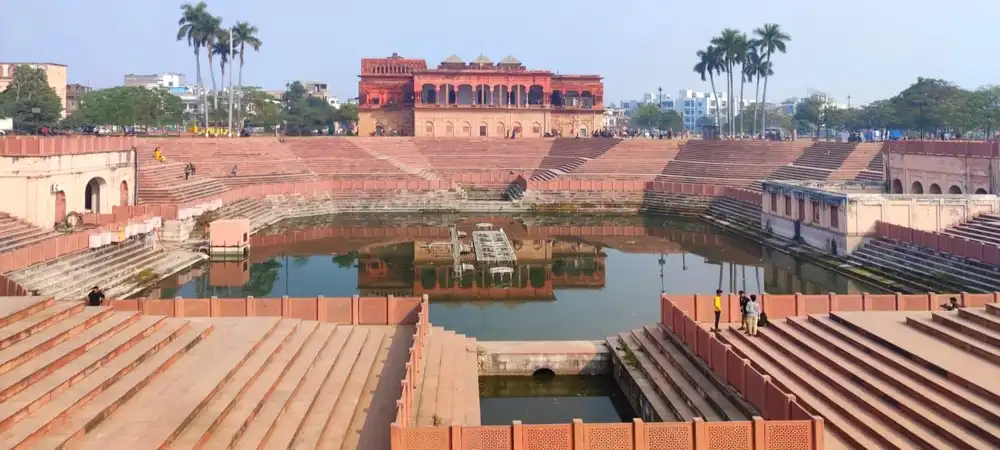
The Husainabad Clock Tower is India’s tallest clock tower. Nawab Nasir-ud-Din Haider commissioned it in 1881, to commemorate the arrival of Sir George Couper, the first Lieutenant Governor of the United Provinces of Agra and Oudh.
The clock tower reflects a blend of European and Awadhi architecture, having drawn inspiration from London’s Big Ben.
The clock’s 14-foot-long pendulum and 12-petaled flower-shaped dial make it a unique engineering marvel of its time. The structure is built using red bricks and white marble.
The clock today stands as a symbol of Lucknow’s colonial past. Developers have beautifully transformed the area, providing a relaxing space to enjoy local food.
Lucknow Residency: Echoes of 1857
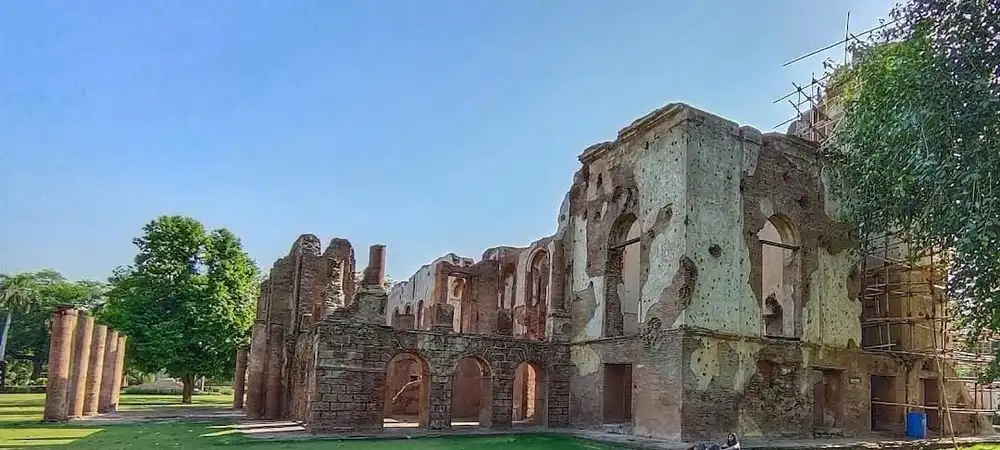
The British Residency in Lucknow is one of the most historic landmarks in India, known for its ruins, bullet-ridden walls, and the tragic stories of the Revolt of 1857.
Nawab Asaf-ud-Daula commissioned this complex in the late 1700s, to serve as the official residence of the British Resident General of Awadh. During the Revolt of 1857, Indian sepoys laid siege to the Residency for 87 days. The battle resulted in massive destruction, and the Residency was never rebuilt. Today, it stands as a testament and a reminder to India’s independence struggle.
Even in ruins, the British Residency showcases colonial-style architecture, with large halls, grand columns, and intricate details that hint at its past grandeur.
The complex has multiple graveyards, including the tomb of Sir Henry Lawrence, the British Resident who died during the siege. After the British recaptured Lucknow, they left the Residency in ruins as a war memorial, and it remains so to this day.
Timings: 7:00 AM – 6:00 PM (Closed on Mondays)
Entry Fee: ₹25 (Indians), ₹300 (Foreigners)
Light and sound show timings: 7:30 PM (1 November to 14 March), 8:45 PM (15 March to 31 October). It is advised to check the timing locally, as often the show gets cancelled due to lack of audience.
Ambedkar Memorial Park
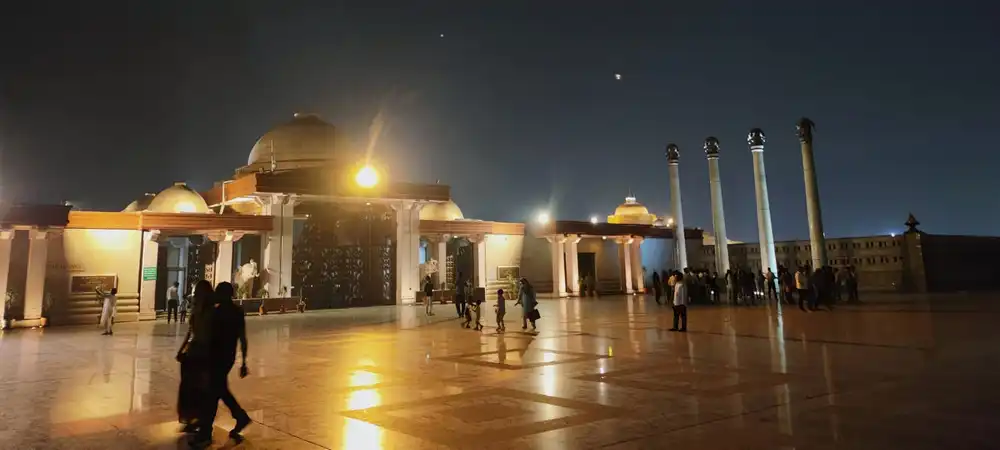
The Memorial Park, located in Gomti Nagar, Lucknow, is dedicated to Dr. B.R. Ambedkar and other social reformers who fought for equality, social justice, and empowerment of the marginalized communities in India.
The Bahujan Samaj Party (BSP) government, led by former Uttar Pradesh Chief Minister Mayawati, commissioned the park. Construction began in 1995 and concluded in 2008. The park was built to honor the contributions of Dr. B.R. Ambedkar, Kanshi Ram, Jyotirao Phule, Narayana Guru, Shahuji Maharaj, and other social reformers who worked towards Dalit empowerment and social equality.
Architects designed and built the entire complex using red sandstone from Rajasthan, blending Indo-Buddhist and contemporary architecture with grand domes, towering pillars, and massive open spaces. Major structures include –
Ambedkar Stupa – It features a large dome, with a statue of Dr. B.R. Ambedkar holding the Indian Constitution. It also showcases significant events from Ambedkar’s life in form of sculptures.
Dr. Bhimrao Ambedkar Samajik Parivartan Sangrahalay (Museum) – Houses large statues of Dr. Ambedkar, Kanshi Ram, and other leaders who played a significant role in social justice movements.
Pratibimb Sthal (Statue Plaza) – A massive open space with 62 elephant statues, symbolizing strength and power. These elephants represent the Bahujan movement and were a controversial element of the park due to their high construction costs.
Ambedkar Memorial Hall – A vast hall designed for public meetings, discussions, and events. The hall features carvings and murals depicting the life of Dalit leaders.
Dr. Bhimrao Ambedkar Vihar & Reflection Pool – The reflection pool is symbolic of self-reflection, justice, and progress.
Timings: 11:00 AM – 9:00 PM
Entry Fee: ₹20 per person
Parking is available.
Best Time to Visit: Evening, when the park is beautifully illuminated.
Gomti Riverfront – Tranquil Escape in the Heart of Lucknow
Built along the banks of the Gomti River, this beautifully landscaped stretch is a favorite spot for locals and tourists alike, ideal for relaxing walks, cycling, photography, and enjoying serene sunsets. Gomti River has been the lifeline of Lucknow, flowing through the heart of the city and witnessing its history and culture. The Gomti Riverfront Development Project was initiated to beautify and restore the river’s ecological balance and today, it serves as a major recreational and tourist hub.
A spectacular water fountain show, synchronized with music and lights, creating a mesmerizing experience in the evenings.
Visitors can enjoy boating on the Gomti River, with options like paddle boats, motorboats, and shikaras.
Imambara Shahnajaf

The Imambara Shahnajaf is one of Lucknow’s most revered Shia monuments. It was built as a replica of Hazrat Ali’s tomb in Najaf, Iraq. Located on the banks of the Gomti River, it is an important site for mourning (Azadari) during Muharram, attracting Shia devotees.
Nawab Ghazi-ud-Din Haider, the first King of Awadh, constructed it in the early 19th century. The name “Shahnajaf” refers to Najaf, the resting place of Imam Ali, the first Imam of Shia Islam and the son-in-law of Prophet Muhammad. King Ghazi-ud-Din Haider was buried inside the Imambara, making it his final resting place.
This imambara features an open prayer hall and a peaceful courtyard. The interiors house Alams (sacred banners), tazias, and symbolic relics which are used during Muharram.
Timings: 6:00 AM – 6:00 PM (Open all days)
One has to remove shoes before entering. Videography is not allowed. Entry is free, though some locals may try to charge money, with false promise of guided tour.
Chandrika Devi Temple
The Chandrika Devi Temple is one of the most revered Hindu temples in Lucknow, dedicated to Goddess Chandrika, a form of Goddess Durga.
People believe the temple is over 300 years old and consider it a powerful Shakti Peeth.
According to legend, the temple has a connection to Lakshmana, the younger brother of Lord Rama. Stories say that Lakshmana’s son, Chandraketu, worshipped Goddess Chandrika at this site while passing through the region during his exile. Foreign invaders destroyed the temple, but a devotee rebuilt it in the 18th century.
The main sanctum (garbhagriha) houses the idol of Goddess Chandrika, adorned with red and gold ornaments. Devotees believe the sacred pond (kund) inside the temple complex has healing properties, and many take a holy dip before offering prayers.
The temple complex features various small shrines dedicated to Lord Shiva, Lord Hanuman, and Lord Bhairava. A centuries-old Bael tree stands in the temple complex, revered as divine. Worshippers say that tying a sacred thread around it fulfills wishes. During Navratri, many devotees visit the temple to seek goddess’s blessings.
Janeshwar Mishra Park
Janeshwar Mishra Park is one of the largest parks in Asia, offering a perfect retreat for nature lovers, fitness enthusiasts, and families.
Authorities built the park in memory of Janeshwar Mishra, a veteran socialist leader and politician from Uttar Pradesh, and inaugurated it in 2014. Inspired by London’s Hyde Park, designers created the park with a zero-carbon footprint approach, making it a model for eco-friendly urban planning.
The park features two artificial lakes which serves as a habitat for migratory birds. Visitors can also enjoy boating. The park has jogging and cycling tracks. The park is beautified by manicured gardens, flower beds, and shady trees. It also serves as a beautiful picnic spot.
A statue of Janeshwar Mishra stands tall as a tribute to his legacy. The park also features war memorials and sculptures dedicated to the bravery of Indian soldiers.
Timings: 5:00 AM – 9:00 PM (Open all days)
Entry Fee: Free
Dilkusha Kothi
Dilkusha Kothi stands as a testament to British colonial architecture and tragic past.
Nawabs of Awadh originally built it as as a hunting lodge and summer retreat in the early 19th century, which later became a strategic site during the Revolt of 1857.
Major Gore Ouseley, a British officer designed the kothi in the style of an English country house with tall towers, large verandahs, and grand facades. During the Indian Revolt of 1857, the Kothi became a battlefield, where British and Indian forces clashed. The building suffered massive destruction, leaving behind only its outer walls and towers.
Today, the kothi stands in ruins, offering a glimpse into Lucknow’s colonial and rebellion history.
Must-Try Cuisine in Lucknow
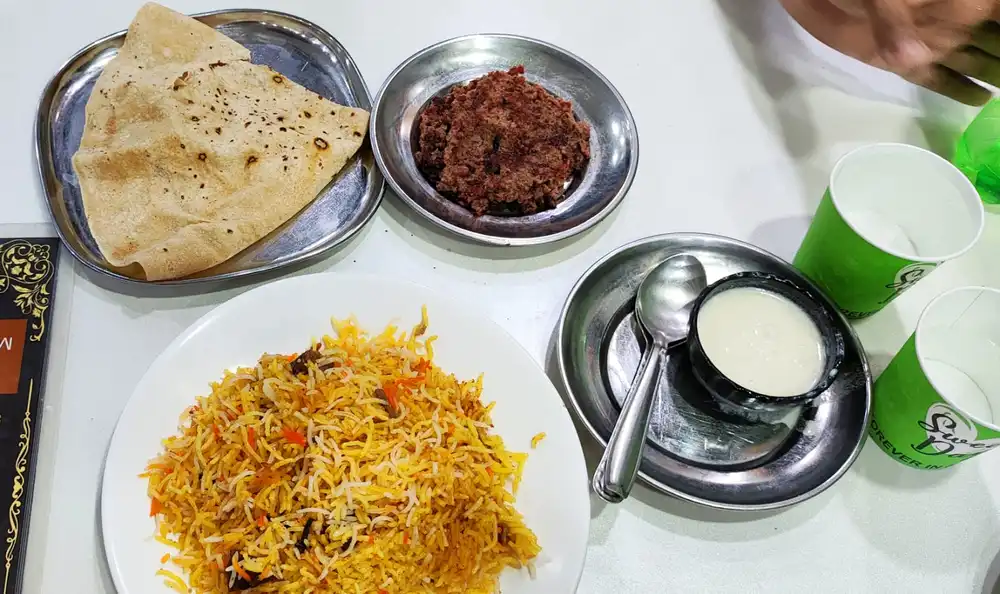
Galouti Kabab
As per Lucknowi legend, the Galouti Kebab was created for a toothless Nawab who wanted a kebab so soft it would melt in his mouth. These kebabs, made from finely minced meat mixed with over 160 spices, are a must-try!
Best Places to Try:
Tunday Kababi (Aminabad & Chowk) – The most famous spot for Galouti & Seekh Kebabs
Dastarkhwan (Hazratganj & Gomti Nagar) – Serves delicious kebabs with soft ulte tawe ka paratha
Azhar Bhai’s Seekh Kebab (Chowk) – Famous for its smoky, flavorful seekh kebabs
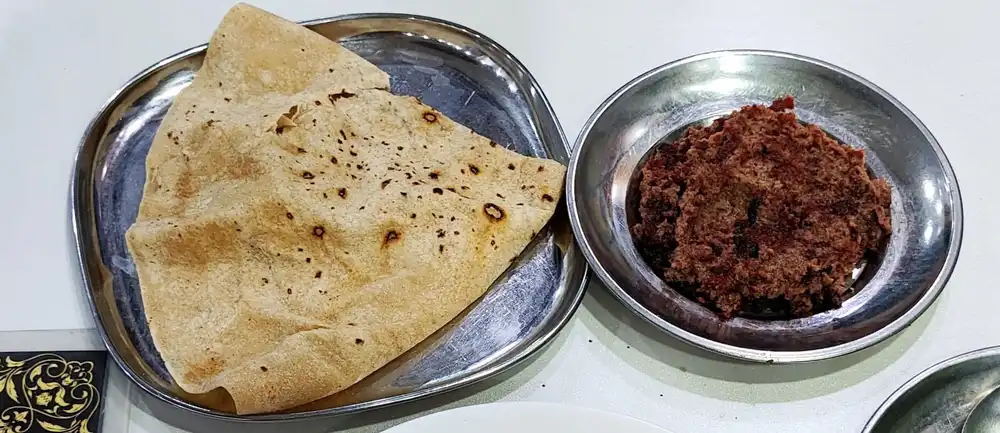
Lucknawi Biryani
Lucknow’s biryani is aromatic, mildly spiced, and slow-cooked (Dum Biryani style). It is also the percussor to Kolkata Biriyani, and bear resemblance in taste and flavor.
Best Places to Try:
Idris Biryani (Chowk) – Very popular, however doesn’t offer seating options.
Wahid Biryani (Aminabad)
Kareem Kababi – close to Aminabad. One can also try their galouti kabab.

Nihari & Kulcha
Nihari is a slow-cooked, rich stew made with tender meat and aromatic spices, served with soft kulchas. It is a breakfast option.
Best Places to Try:
Raheem’s Nihari (Chowk) – A century-old shop famous for its soul-satisfying nihari. Separate sitting arrangement for men and family.
Mubeen’s (Chowk) – Serves mouth-watering nihari, sheermal (saffron-flavored, slightly sweet Nawabi bread) , and pasanda

Malai Makhan (Winter Special)
Malai makhan is a frothy, saffron-infused milk dessert that melts in the mouth. It is available as a winter delicacy.
Best Places to Try
Ram Asrey (Chowk)
